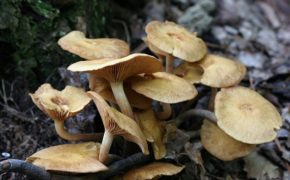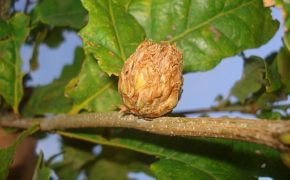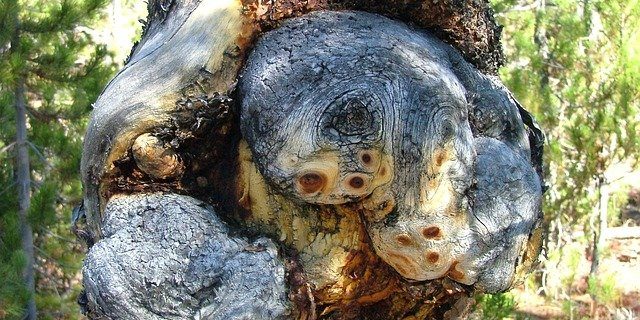
Get a quick no obligation quote It’s free and will only take a jiffy!
How Trees Respond to Damage: Burrs and Ooze
When trees come under attack, they sometimes fight back to protect themselves. Two of the effects of responding to damage are what we’re looking at here: burrs, and bacterial ooze.
If you’ve ever noticed trees with knobbly growths on their trunks, or slime oozing from the bark, then it’s likely these trees have been damaged in some way. Let’s take a look at these symptoms in a little more detail.
Tree burrs
Knobbly growths on trees are known as burrs or burls. They consist of a mass of bud and shoot tissue that grows profusely to form a distinctive growth on the trunk.
Burrs generally form in response to some form of stress. This could be a wound, maybe caused by human intervention, or some natural occurrence. Burrs form over the wound, protecting the tree from any further damage at that particular site.
Whilst burrs can appear somewhat unsightly, they don’t cause any harm to the tree. They are just a unique feature, something that sets one tree apart from the next, and creates a degree of charm and intrigue.
Burrs can in in fact add interest and therefore value to a tree, as they result in unusual wood patterns that can become very sought after.
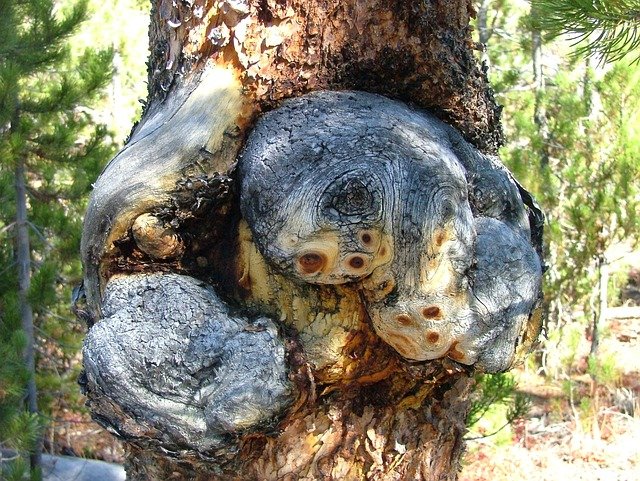
Bacterial tree ooze
Bacterial tree ooze isn’t all that common here in the UK, but it does occur from time to time. It looks like slime running down the bark of a tree.
Bacterial ooze forms when a tree is damaged and then infected with bacteria. Sometimes, if the bacteria are able to feed on the sap of the tree, and nothing prevents them from multiplying, then this slime will form.
The immune system of a tree protects it from severe infections. But if a tree cannot heal a wound, then bacterial ooze will form because it cannot stop the bacteria feeding on the sap.
Bacterial ooze is often fatal. Because the bacteria literally eat the tree, this will rot it, eventually leading to its death. Unless it’s possible to identify precisely what bacteria are causing the problem, it can be very difficult to work out how contagious it is and how to treat it. The bacteria in question are usually present anyway without causing any issues, and this is something that doesn’t tend to spread from tree to tree.
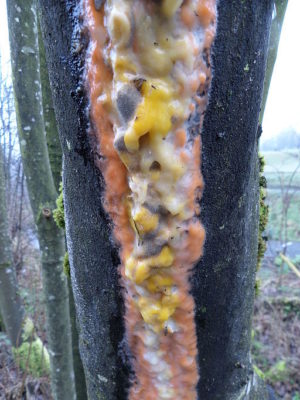
Other pathogens can however accompany bacterial ooze, causing further harm to the tree. For example slime flux is a mixture of bacteria and yeast. It has a distinctive yellowy-orange appearance and, because the yeast and bacterial ferment the sap, a bad odour results, which attracts insects.
As soon as you spot bacterial ooze, it’s vital to take action. Rot can weaken a tree, so it’s vital to have the tree checked to ensure it hasn’t weakened to the point where it has become unsafe.
The Woodland Trust is keen to track the prevalence and spread of bacterial ooze around the United Kingdom, so if you do spot it you are urged to complete a Tree Alert form to help with the efforts.
Taking care of trees with help from TH Trees Ltd
If you notice anything about your trees that doesn’t appear right to you and you are worried that there could be something affecting their health, please don’t hesitate to get in touch with our qualified experts. We have the knowledge and expertise to diagnose and treat a range of tree diseases, and make trees safe that could be posing a hazard.
For all the specialist advice you need, talk to the trusted team at TH Trees Ltd.
Had a fallen tree in the early hours of Monday morning, called for quote and the team had it cleared on the same day. Really good communication when the lads were onsite and did a great job. Lots of pride in their work shown with the thorough clear up. Would thoroughly recommend.
Thank you Stuart for your kind review. We were glad to be able to help you with your fallen tree. If there's anything else you need in the future, please don't hesitate to get in touch.

